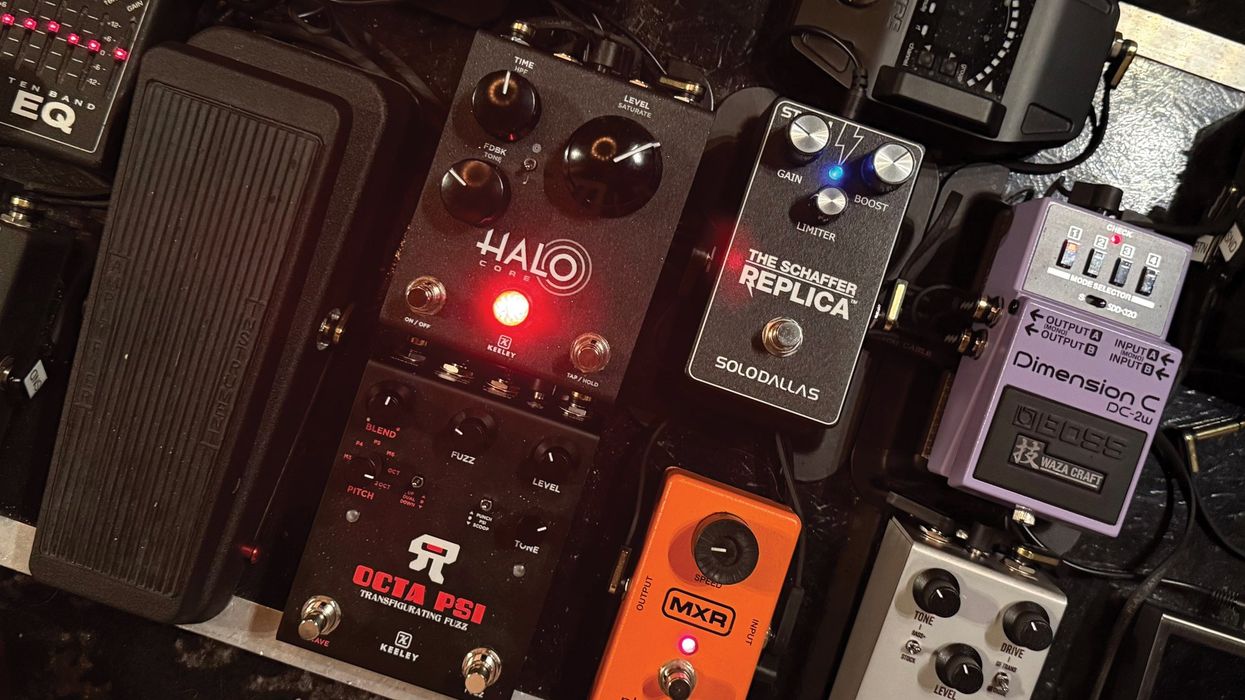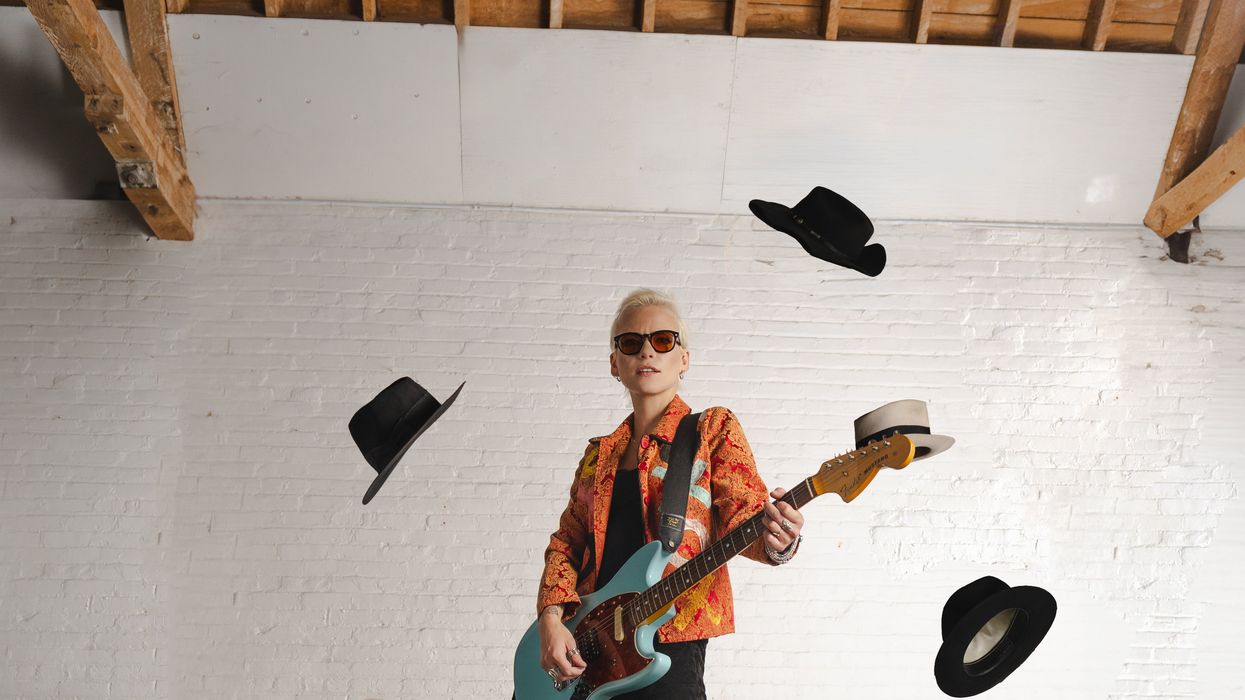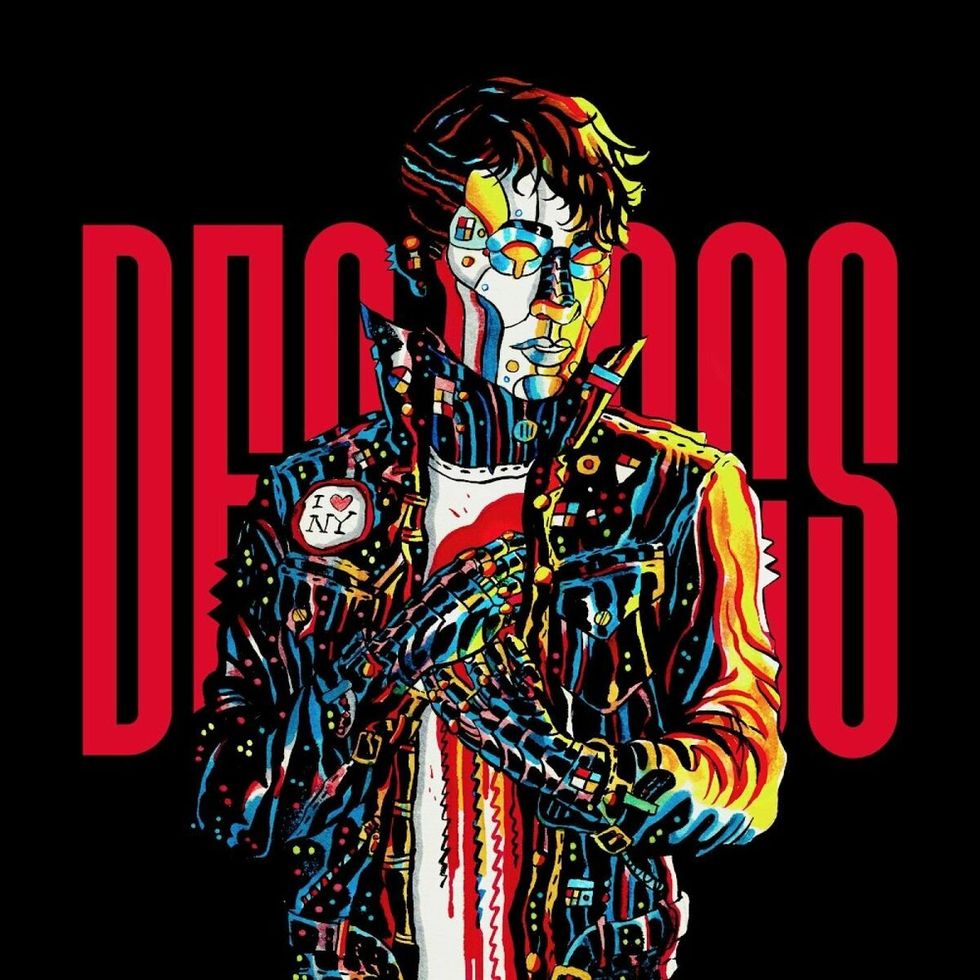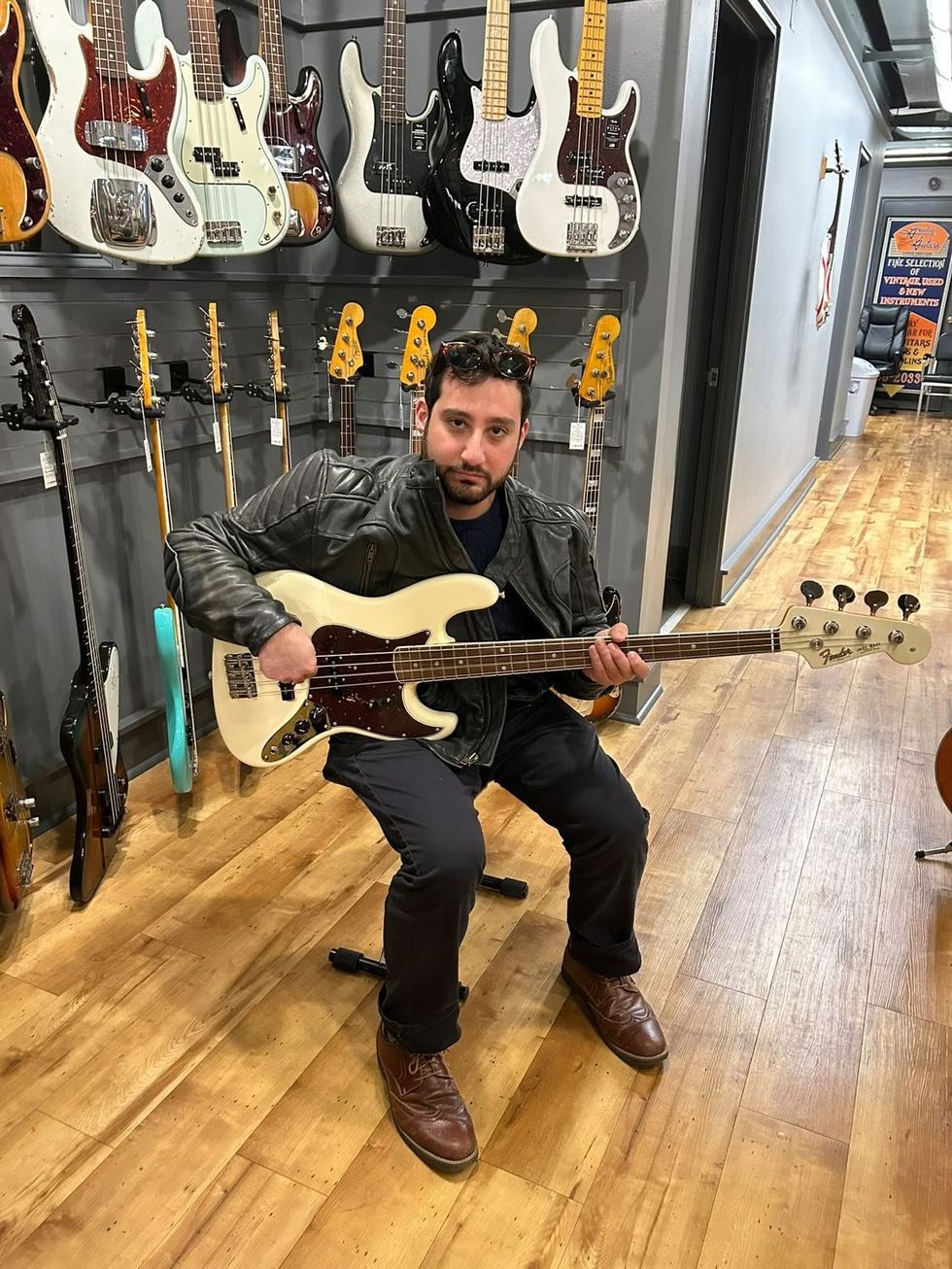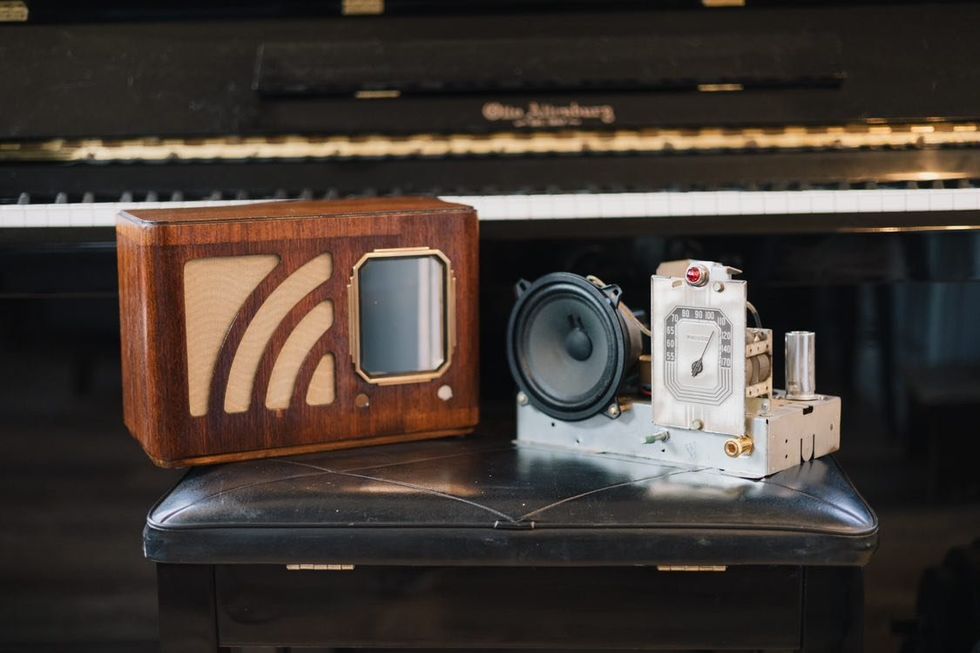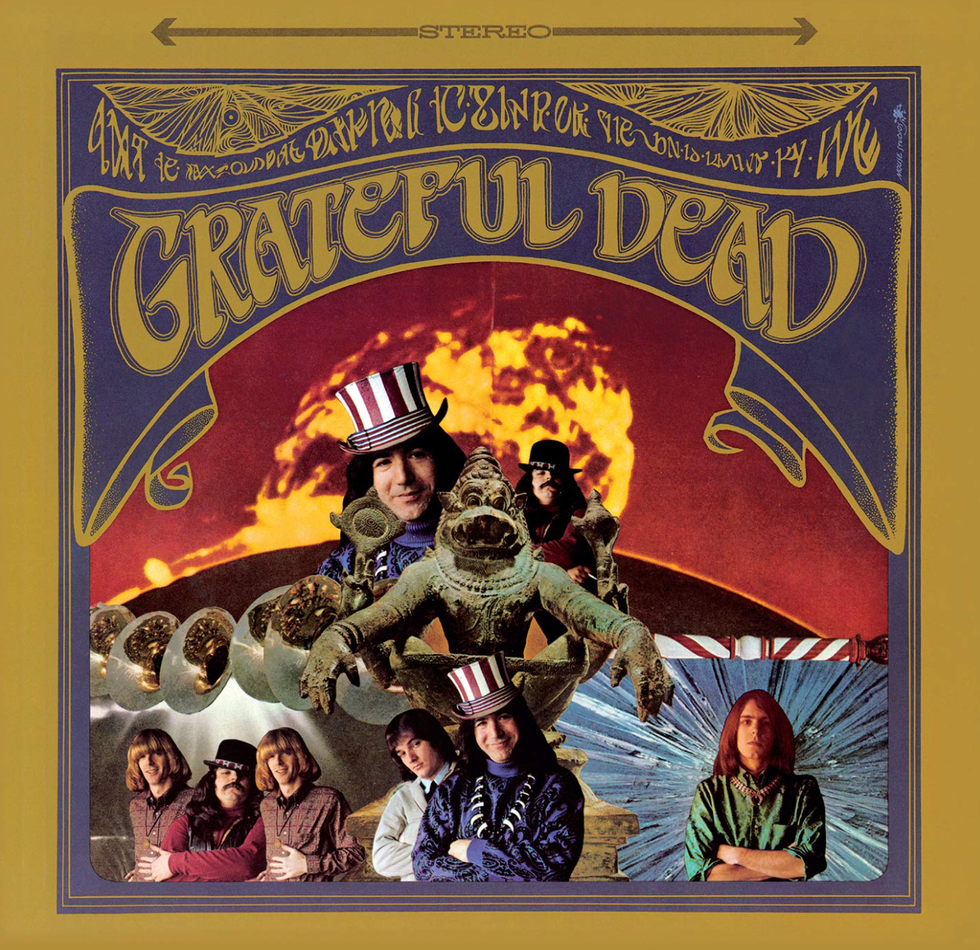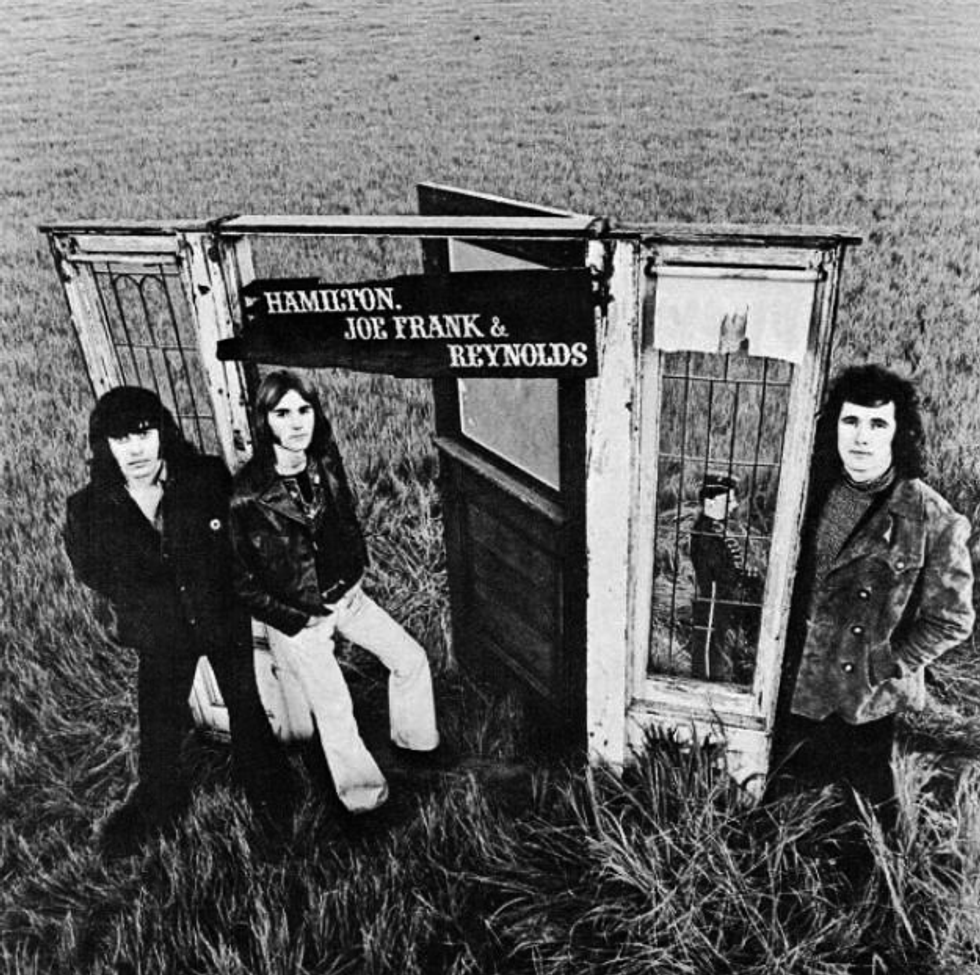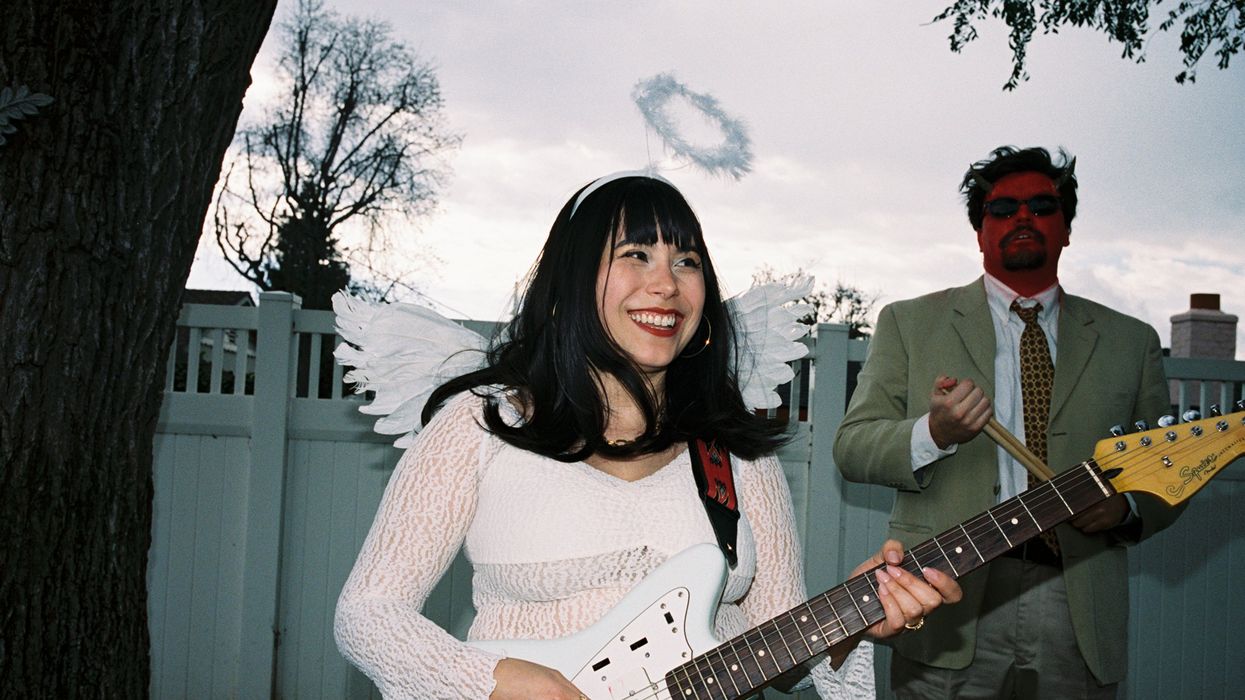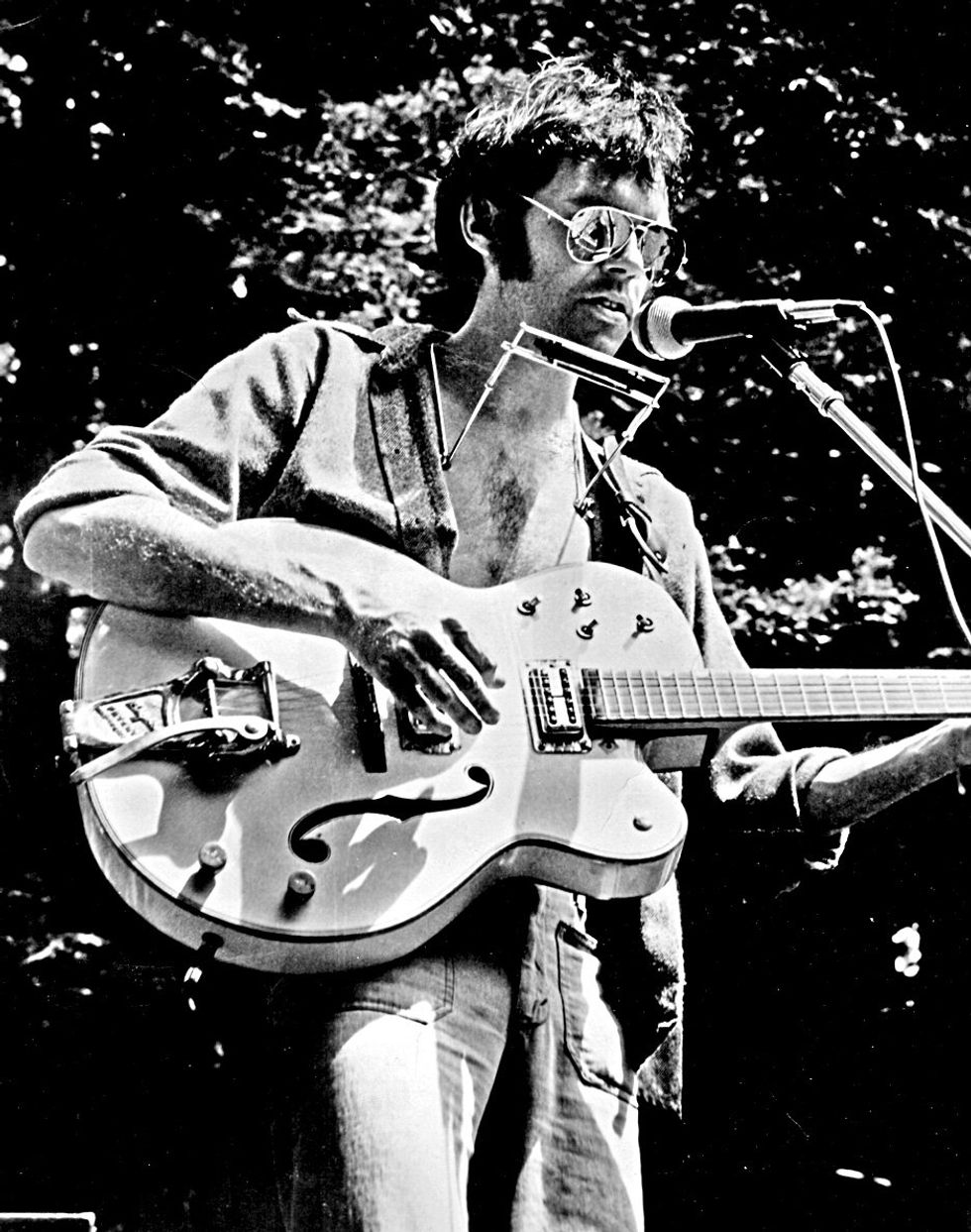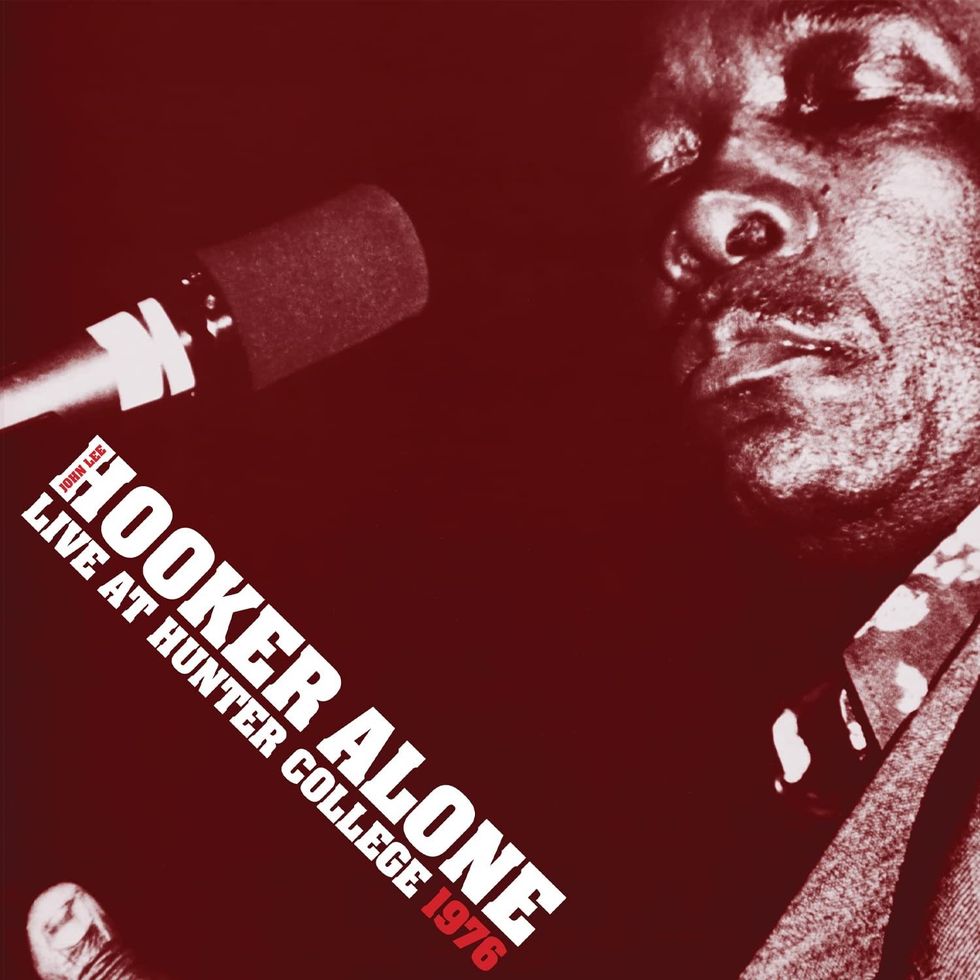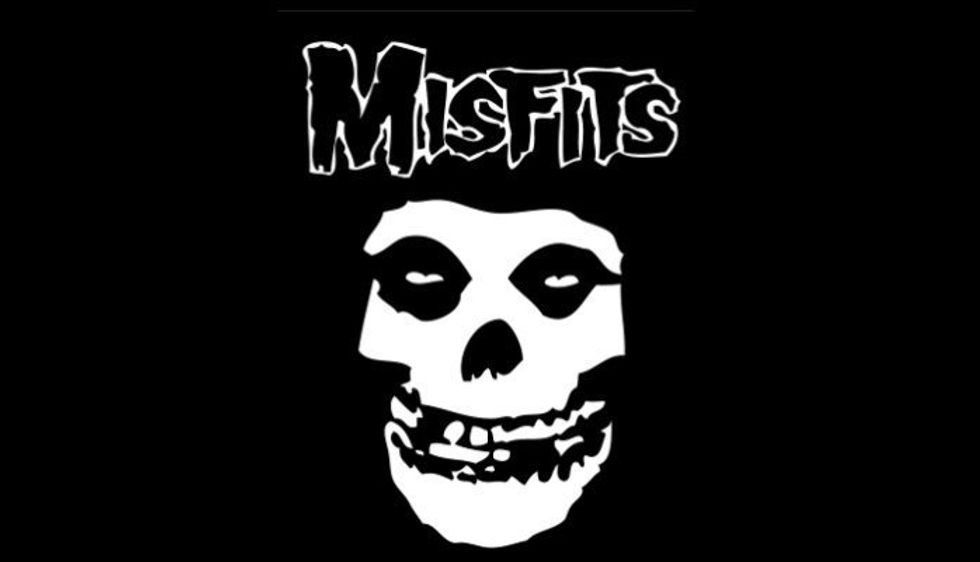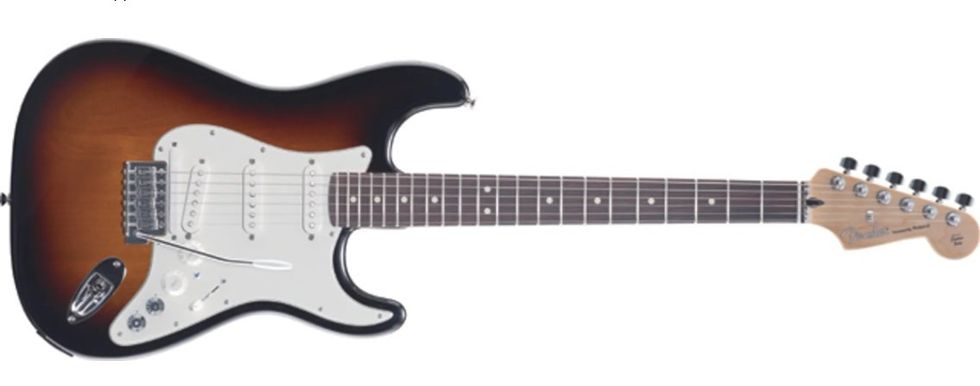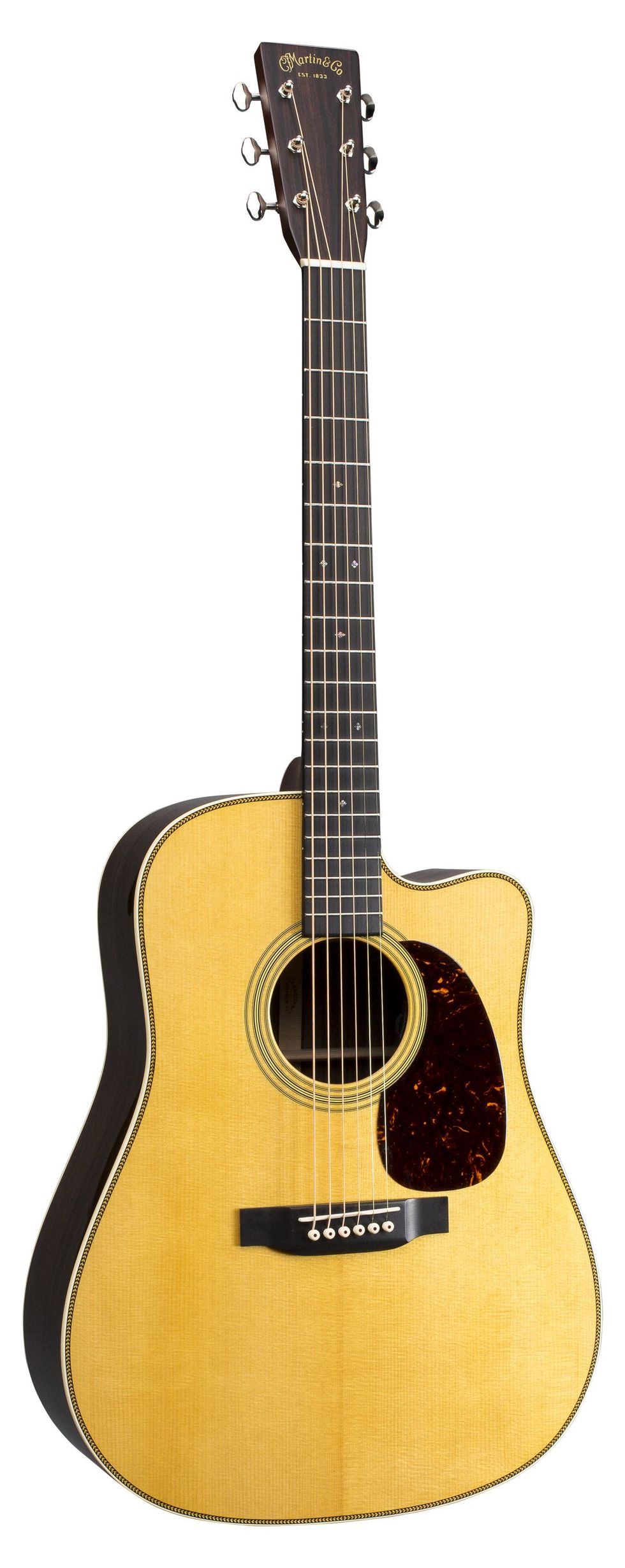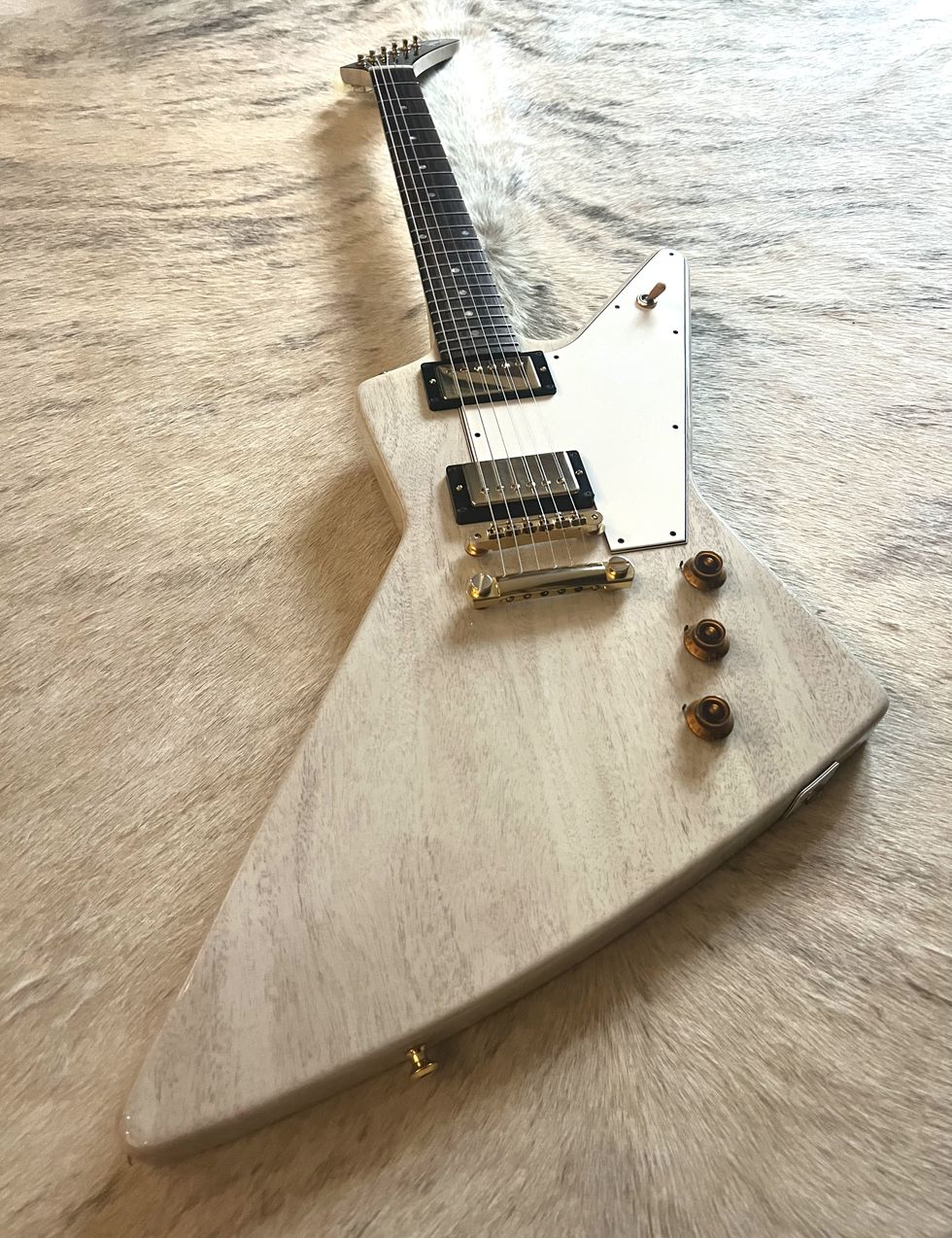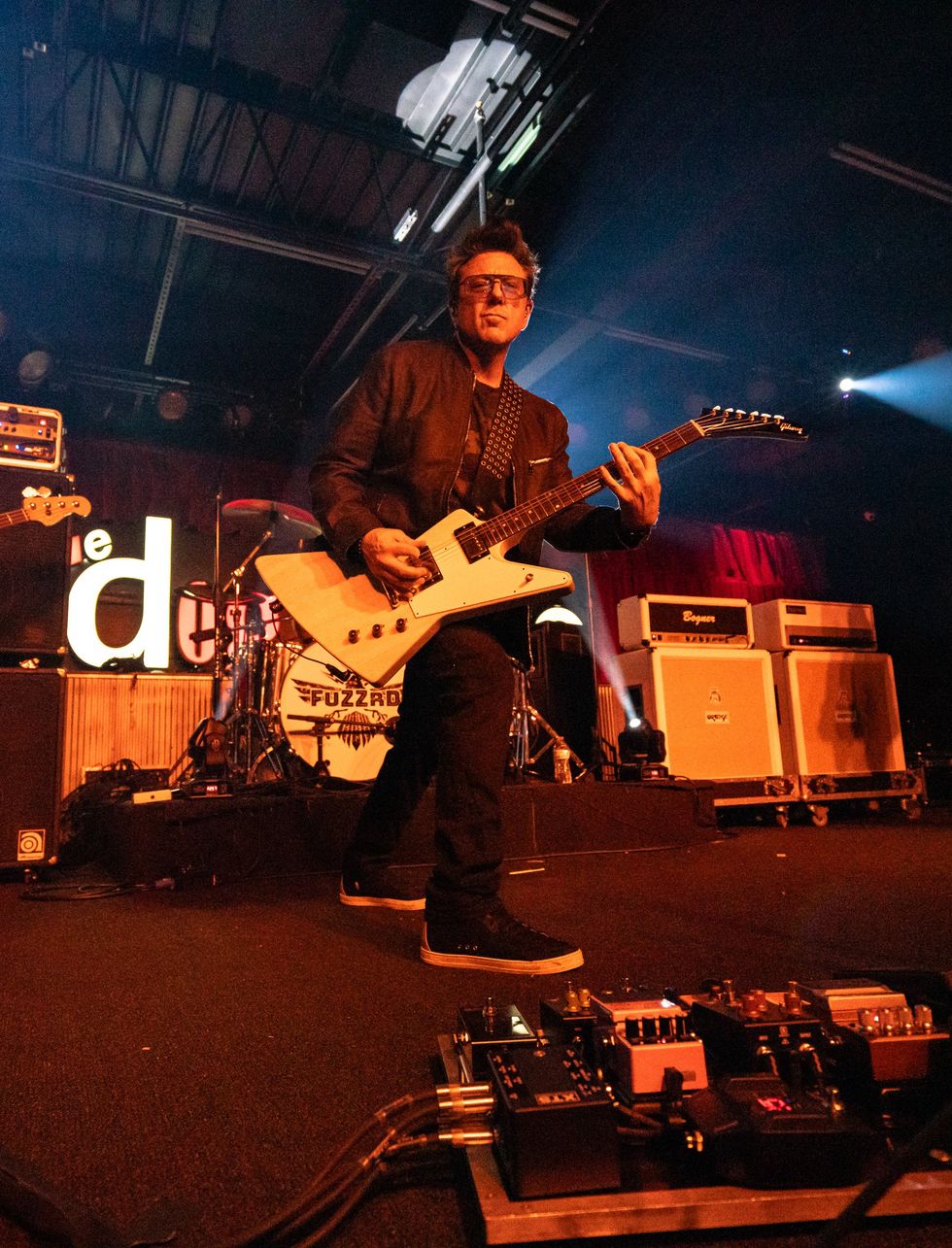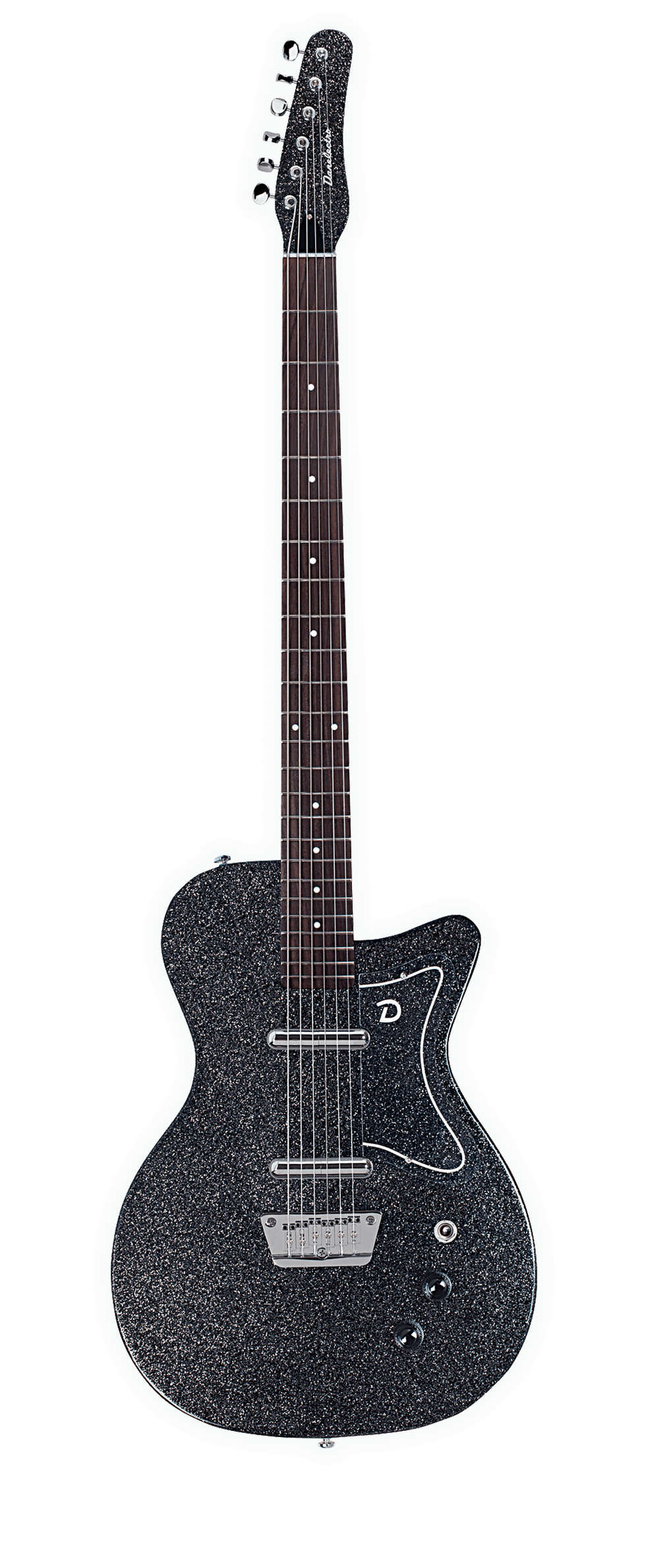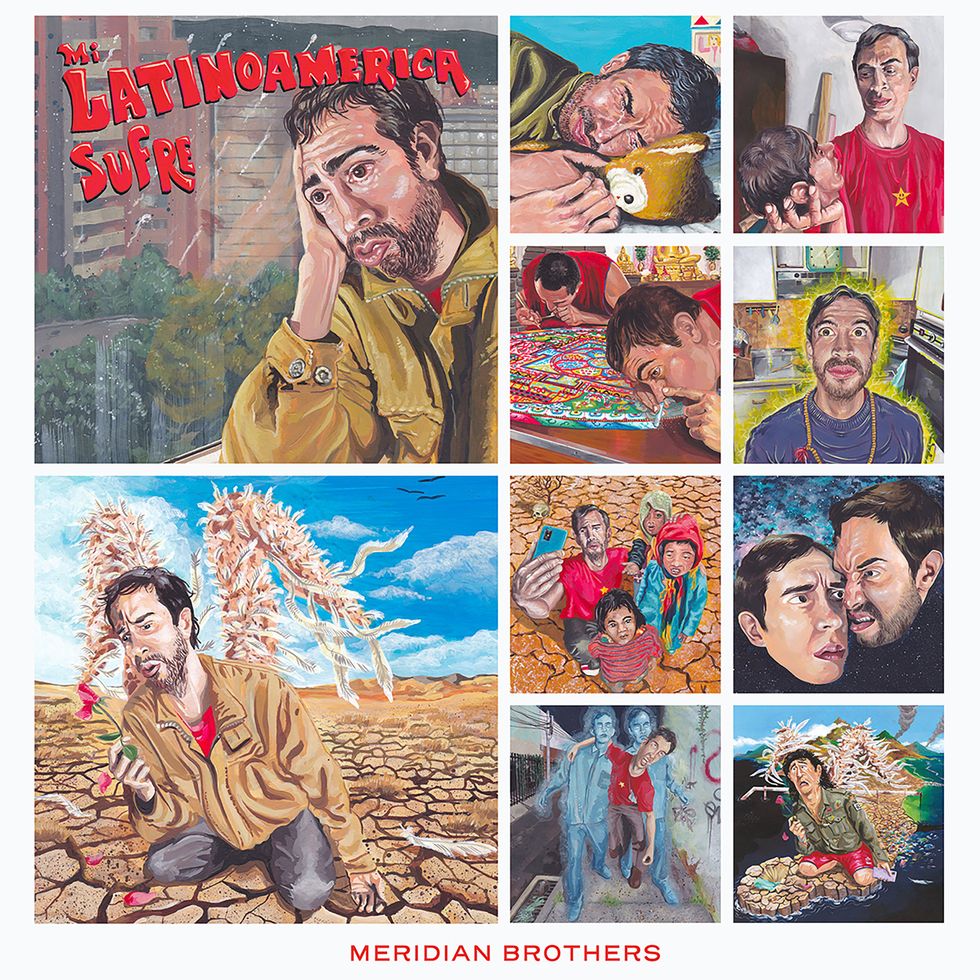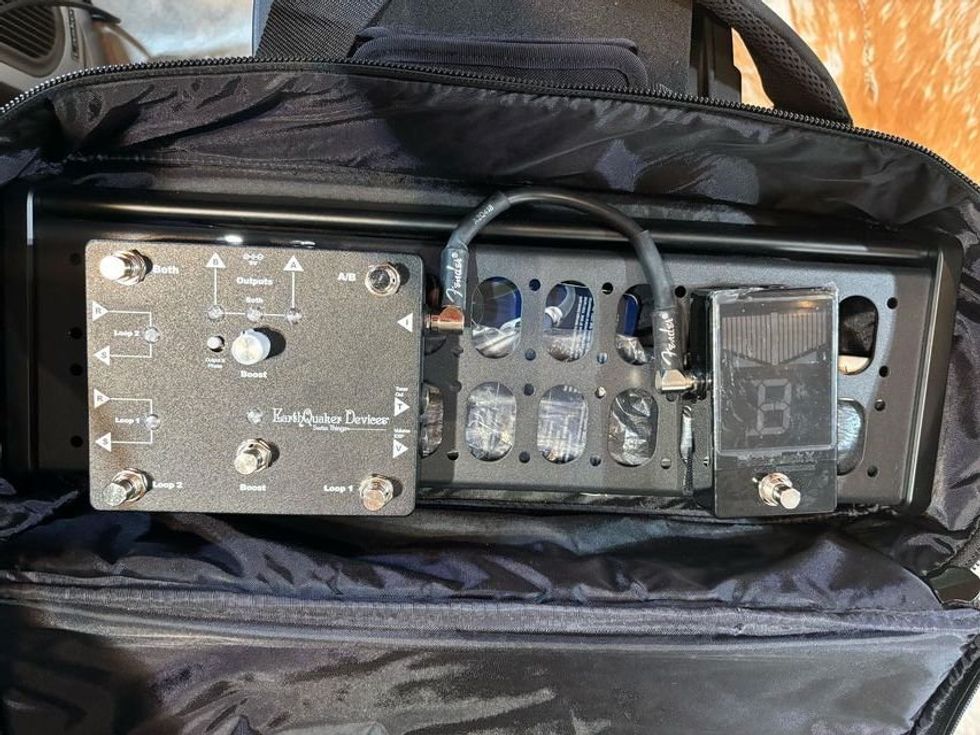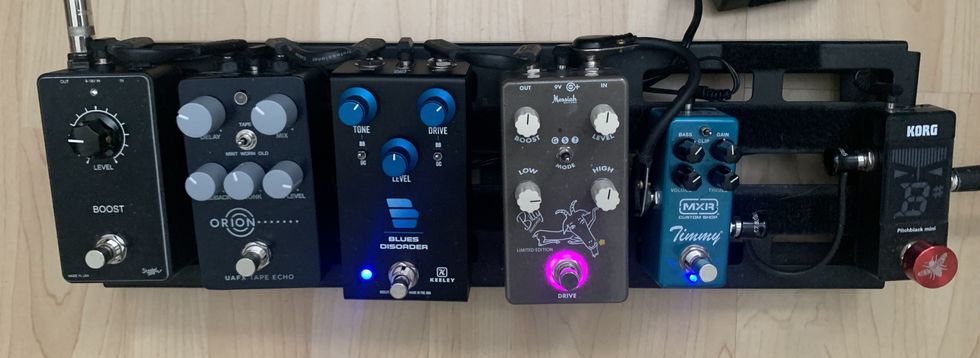A: One of my most embarrassing stage moments was during my time playing guitar for Michael Jackson: ONE by Cirque du Soleil. I remember feeling very confident as I ran across the stage to reach the top of a large multi-tiered light-up set piece. I jumped to the first step fine and then tripped over my own feet, sending myself (and worse yet, my guitar) flying face and fretboard-first into the next two huge steps. I’ll never forget the sound of my open strings clanging and feeding back. As I crawled my way to the top of my destination to finish the song, I felt a cold, oily surge rushing down the front of my shin. At the end of the show, I had to peel my costume pieces away from the river of then-dried blood that encased my leg. I jumped in my car to head to urgent care and received 17 stitches to the front of my shin. I guess I was running a little too hard that night!
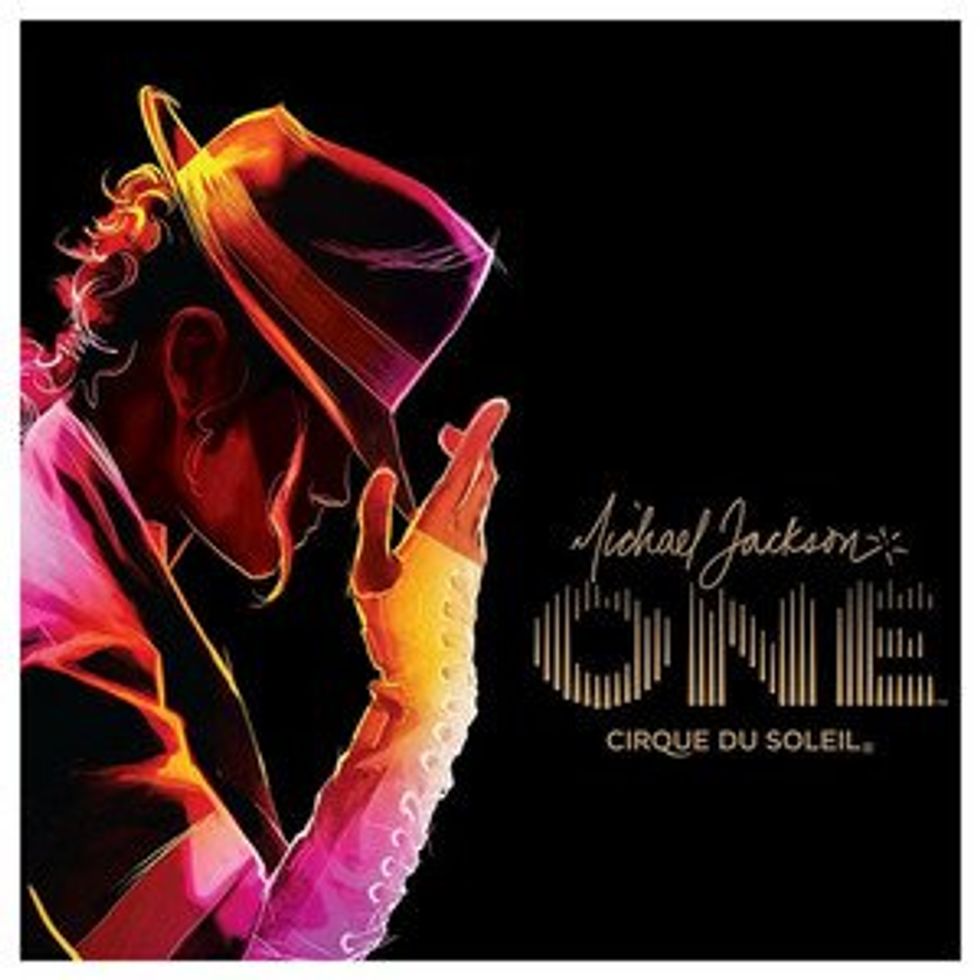
Current obsession: The double-edged sword of music obsession is that, as your passion for consuming music heightens, you are no longer capable of being a passive listener or casual fan! It’s fun to begin to pay attention to things like the air between cymbal crashes, but your ability to let music just play in the background without having an active role in the experience begins to diminish.
Brett Petrusek - PG's Director of Advertising
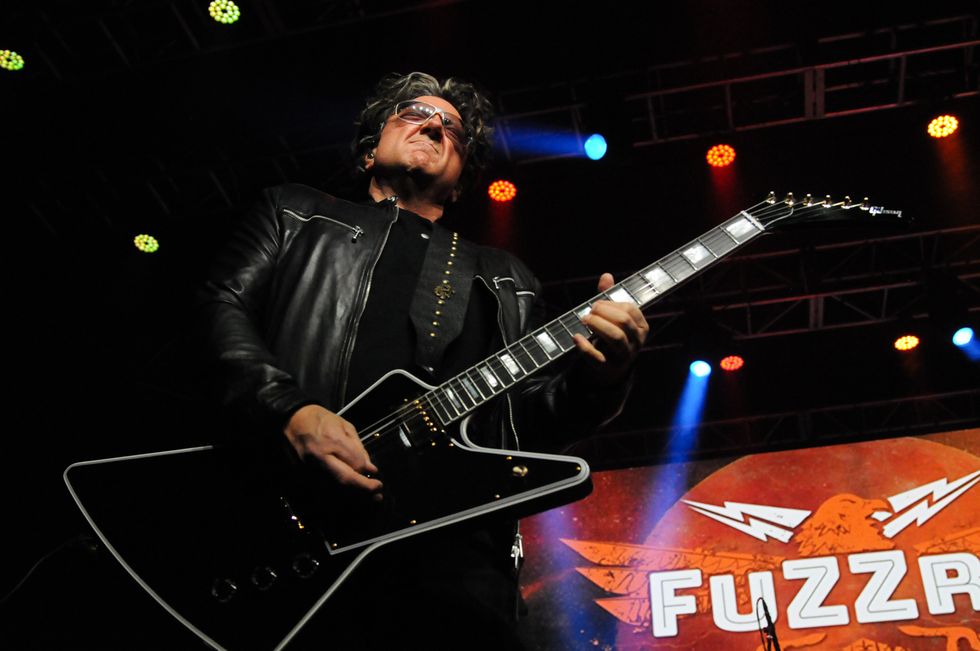
Brett Petrusek onstage with his band, Fuzzrd.
A: Circa 2015, my former band was slotted on a festival-style show at Full Throttle Saloon in Sturgis. On the first guitar switch, a very green tech handed me my Les Paul perfectly tuned, but one half-step sharp! Two songs later, a nasty storm rolled in and blew two backline Marshall stacks over, nearly killing our bass player. I’m not sure if it was embarrassing or just plain horrible. We dusted off and finished our set.
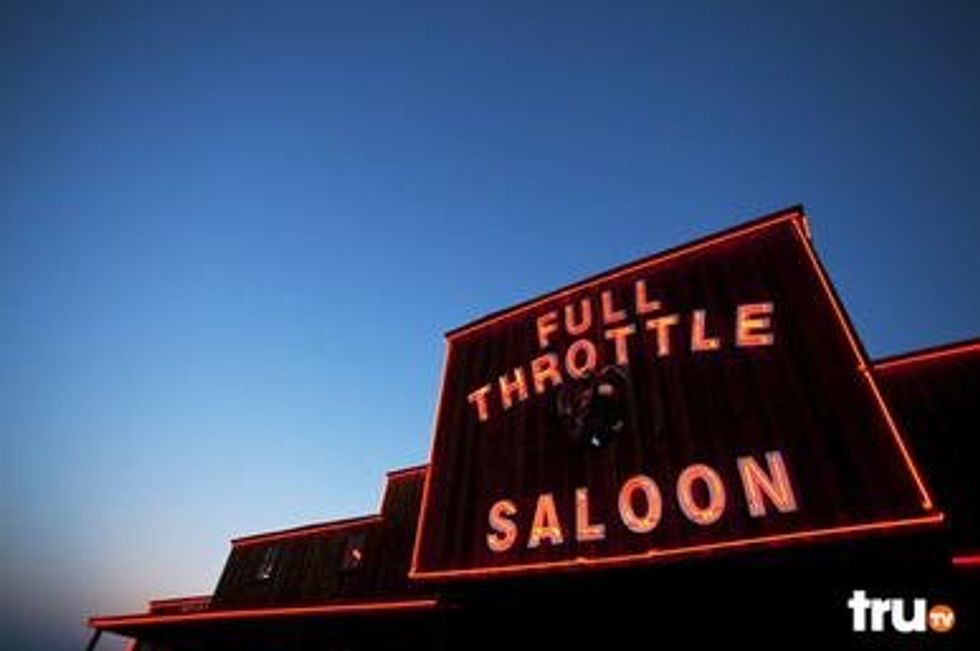
Current obsession: Having been raised on 100-watt Marshalls, I’ve always snubbed my nose at amp simulation, but lately, I’ve been experimenting with blending plugins and big amps in the studio. Neural DSP has been my go-to. I really like the way they sound, and more importantly, feel, for big rock and higher-gain tones. Learning to trust your ears is a good thing: If it sounds good, it is good.
Ted Drozdowski - PG Editorial Director
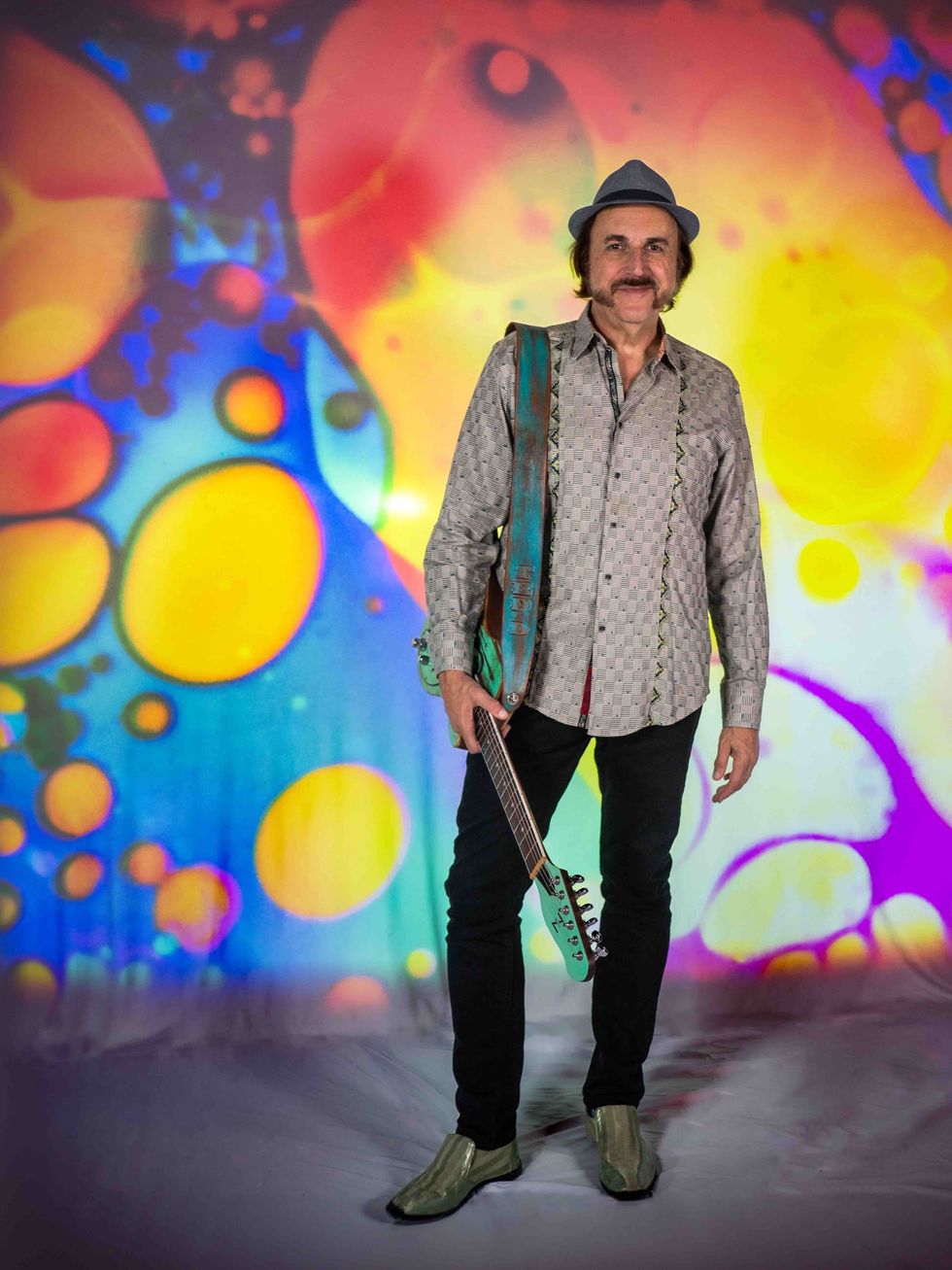
Ted Drozdowski
A: In 2011, I was playing a post-Deep Blues Festival gig at a dive bar called Big V’s in Saint Paul, Minnesota. I’d walked bars hundreds of times, and always made it a point to suss out obstacles before the show. During the first number, I’m on the bar and suddenly a drunk throws her head and shoulders on the bar exactly where I’m about to put down my raised foot. Instinctually, I pulled up to avoid her, and a rusty metal ceiling fan like the propeller of a Cessna caught me right above the eyes. I staggered, but kept playing all the way from the bar to the restroom, where I saw I’d been sliced to the (exposed) bone. I still kept playing. After all, there were paying patrons! At one point, a local promoter ran to a nearby 24-hour CVS for bandages, and he came up onstage to try to tape the wound while I played. No luck. When this photo (below) was taken, I’d gone outside, where Mississippi bluesman T-Model Ford was watching the show from the open door of a van, and I grabbed his Jack Daniel’s bottle to play some slide. An hour later, after the gig, I sold merch, packed up, and then went to the hospital. I have a scar.

Ted Drozdowski
Current obsession: Never walking into another ceiling fan!
Chris Reichl - Reader of the Month

Chris Reichl
A: It so happened that as we were setting up, we forgot the important rule of setting up a stage PA. If I remember correctly, it was that the amps weren’t on the same circuit as the PA was, so as a result, as I would approach the microphone to sing, I would get zapped. I would also get zapped while playing the guitar if I was making contact with the microphone.
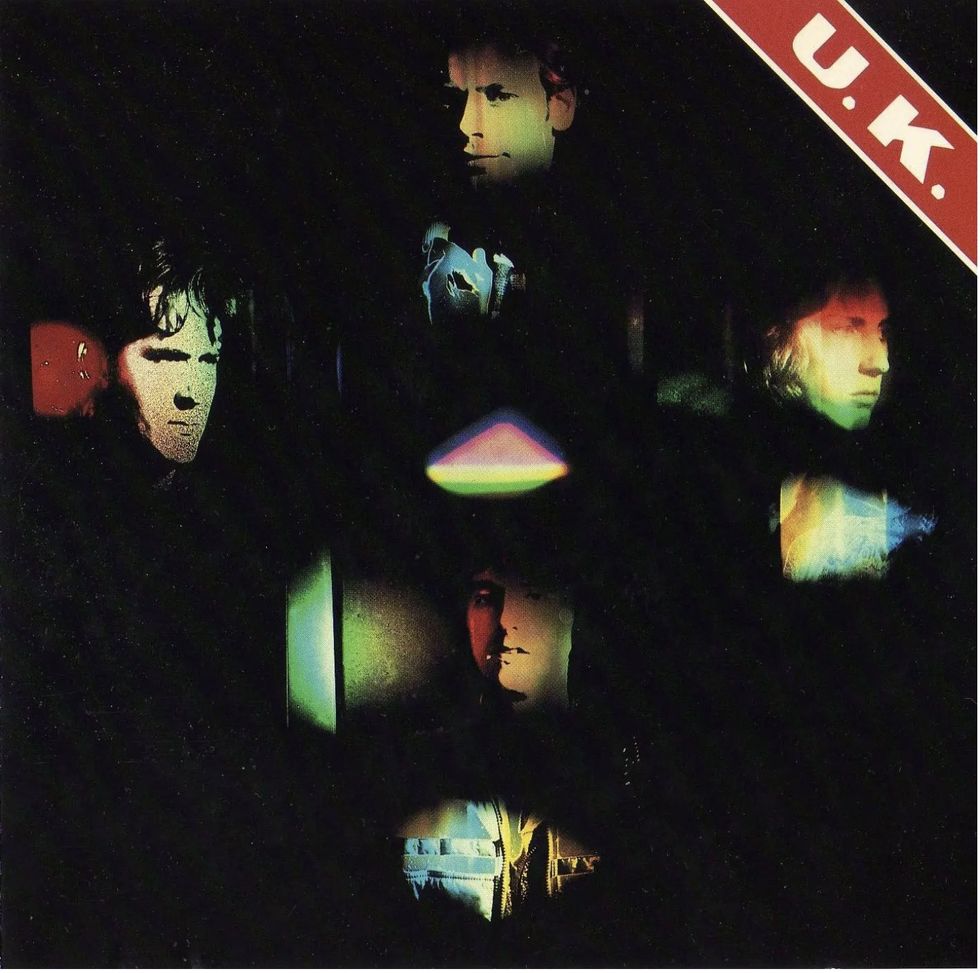
Current obsession: I wouldn’t necessarily call it an obsession, but I tend to listen to Pandora a lot, mostly on a progressive rock station. Recently I expanded my playlist to include guitarists like David Gilmour’s solo work, Jeff Beck, Eric Johnson, and some Allan Holdsworth when he was with the band U.K. Also, I’ve been trying to play more guitar, as in, just play, without overthinking it.

